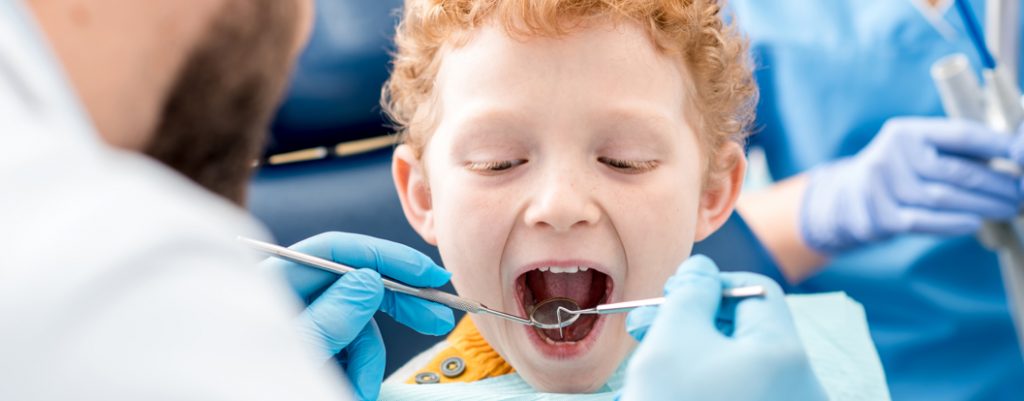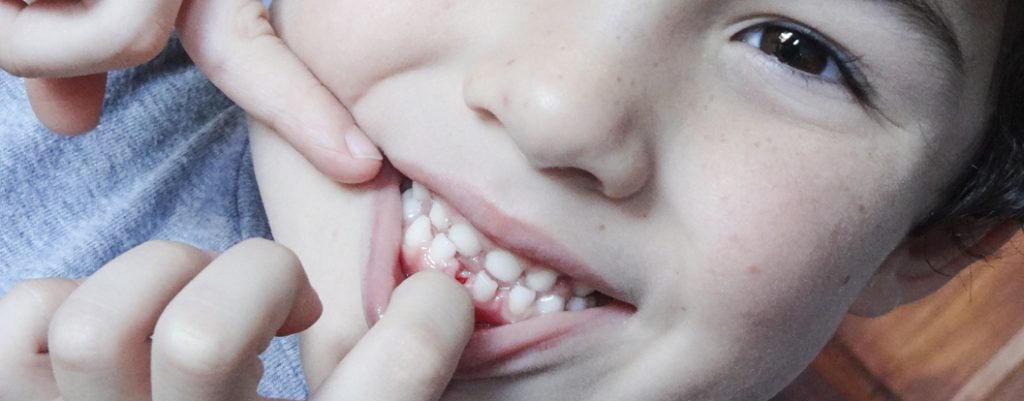Baby teeth, sometimes called “primary teeth,” are like a trial run, a practice round in dental care before moving on to the big leagues, a set of forever teeth. These tiny chompers aren’t just for brushing practice and munching healthy snacks, though – they also form a direct connection to the Tooth Fairy. But before our favorite dental sprite can come fluttering into you and your child’s life, those teeth will have to come out. Losing baby teeth is a totally natural part of growing up, but it can also be an anxiety-inducing experience. But here’s the good news: the more you know about baby teeth, the better you can prepare for losing their departure. We’ve got you covered – here’s a crash course on all things baby teeth.
How many are there?
Take a peek inside your child’s mouth and, if all the baby teeth have come in, you can expect to find eight incisors (four top, four bottom), four canines (two top, two bottom), and eight molars (four top, four bottom). That’s a grand total of – drum roll, please – twenty baby teeth. You can expect the incisors to emerge first at 6-12 months, followed by the canines at 16-23 months, with the molars bringing up the rear at 13-33 months. Check out this handy chart from the American Dental Association for a visual representation.
When will baby teeth fall out?
Typically, baby teeth follow a “first in, first out” pattern, so in most cases, the central incisors are the first teeth a child loses at age 6 or 7 (on average). After the first one drops, the other three central incisors fall out in rapid succession. This is why you’ll often see adorable kid smiles with big gaps where their front teeth belong, just like in the 1944 Christmas song “All I want for Christmas Is My Two Front Teeth.” So when that first tooth starts to wiggle, prepare for a few Tooth Fairy visits in a row. After the incisors, the teeth work their way back. Most often, canines fall out next, followed by molars, but this isn’t always the case. It depends on which teeth emerged first.
Why do they fall out?
It might be scary to see a small bone fall out of your mouth, but assure your child that this isn’t just normal, it’s exciting! It means that the Tooth Fairy is coming soon and that means one step closer to forever teeth. The role of baby teeth is to develop the oral cavities so that permanent teeth can grow into them. As a forever tooth begins its descent, it pushes its baby tooth counterpart farther and farther down until boom, it pops out. Then, the forever tooth continues its downward journey until firmly rooted in place. The Tooth Fairy gets another baby tooth, and in return, your child gets a permanent one and a magical gift.
How do you care for them?
Brush, brush, brush! The most important part of keeping baby teeth clean is equipping your child with a healthy teeth toolkit – toothbrush, fluoride toothpaste, themed flossers, mouth rinse – and encouraging them to brush at least twice a day. Because they’re much smaller than forever teeth, baby teeth often have wider gaps between them and don’t require flossing. However, as the permanent teeth begin to come in, help your child get in a flossing habit to clean between any teeth that touch. Diet can also have a huge influence on the health of baby teeth. Try to limit heavily sugary or acidic food and beverages like soda. Baby teeth are sensitive so sugar can accelerate enamel breakdown and cause cavities. Even if you and your child have a perfect routine and follow all of these guidelines, semi-annual trips to the dentist can help make sure you stay on the right track, especially when those baby teeth start falling out.
There you have it, all the essential knowledge about baby teeth. You’re basically an expert now, and with the Tooth Fairy on your side, you’re ready to guide your child through the process of losing their pearly whites. Receive more guides like this one by following us on Facebook, Twitter, and Instagram.





